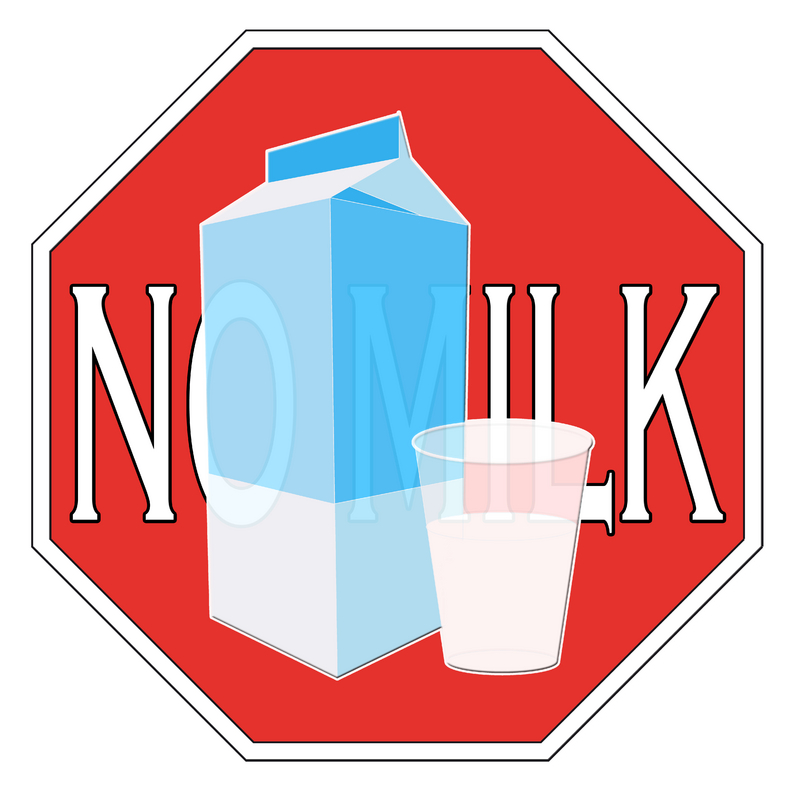The average American consumes about 600 pounds of dairy products per year – more than almost any country in the entire world,.
Considering the fact that we consume so many dairy products, it’s no surprise that health-minded people are shifting toward organic versions of the popular creamy foods. After all, the research is clear – conventionally-produced dairy contains pesticides, herbicides and bovine growth hormone, all of which are associated with increased risk for certain cancers.
But will shifting toward organic forms of dairy help prevent cancer – or does the consumption of organic dairy maintain its share of risk on human health? Let’s take a look.
Hormones designed to grow a 300 pound animal
Look closely at your container of organic milk and you will see the phrase “no hormones added.” It’s true that organic dairy cows are not injected with growth hormones. However, organic milk contains loads of naturally-occurring hormones and growth factors – 39 to be exact.
How can this be? Well, think about it. The purpose of all mammalian milk is to rapidly grow a baby. For example, human breast-milk is designed to double an infant’s weight in one year. Cow’s milk is designed to grow a 40 pound calf into a 300 pound cow or steer in one year – that’s multiplying a calf’s weight by nearly eight in just one year! Indeed, the ideal ratio of fat, carbohydrate and protein exists in each mammal’s milk to properly grow its offspring. However, in addition to these macronutrients, an entire host of growth hormones and growth factors are also present to ensure that growth.
Insulin-Like Growth Factor (IGF-1)
One of these growth factors is called IGF-1, and both humans and cows naturally produce it. However, it is found in much higher levels in cows and therefore in cows’ milk. IGF-1 stimulates cell division, is naturally high during the years of puberty (e.g. female breast growth), then tapers off as we age.
Research shows that IGF-1 is required for tumor formation, accelerates malignant cell growth, and accelerates the ability of cancer cells to spread to other organs. And not surprisingly, studies also show that consumption of whole, reduced-fat, and skim milk raise IGF-1 levels in adults.
As mentioned, there is a direct association between the consumption of dairy and one’s level of IGF-1. To take it a step further, there is also a direct correlation between one’s IGF-1 level and the diagnosis of breast cancer and prostate cancer.
Just how much of an association? One study conducted by Brigham & Women’s Hospital and Harvard Medical School found that post-menopausal women with the highest levels of IGF-1 had three times the risk of breast cancer as those with the lowest levels. This same study also found that pre-menopausal women with the highest levels of IGF-1 had seven times the risk of breast cancer as those with the lowest levels.
As for prostate cancer, a study conducted by researchers at Harvard University found that men with elevated IGF-1 were up to four times more likely to develop prostate cancer than men with normal levels, and for men in their 60s, the risk for prostate cancer was eight times more likely than for those with normal levels.
A study published in the International Journal of Cancer reported that “the association between dairy products and prostate cancer is one of the most consistent dietary predictors for prostate cancer in the published literature.”
So, the next time you reach for organic cottage cheese, yogurt or milk, keep in mind that you are consuming a product containing growth hormones and growth factors that are designed by nature to grow a 300 pound animal in one year. Also keep in mind that when it comes to cancer prevention, rapid growth of cells is something we definitely don’t want.
Avoiding Lactose: It’s not just for the intolerant anymore!
Lactose is the sugar found in milk; it’s what makes mammalian milk sweet. Indeed, it’s one of the many reasons that babies like to nurse. Babies, in fact, make an enzyme called lactase which helps break down lactose. Interestingly, human production of lactase tends to decrease around the age of four – the age upon which weaning has usually occurred. Simply stated, once a baby has weaned and survives on solid food, there just isn’t any need for our bodies to continue to produce lactase. This is why the vast majority of the human population becomes “lactose intolerant” after childhood.
Even if you are a member of the world’s minority that is not lactose intolerant, consider this: The more dairy you consume, the more lactose you consume. And research shows that the more lactose you consume, the higher your risk for ovarian cancer.
For example, the Iowa Women’s Health Study found that women who consume the most lactose had a 60% higher risk for ovarian cancer when compared with those who consumed the least. Interestingly, Sweden – the country with the lowest rate of lactose intolerance in the world – also has the highest consumption of dairy in the world along with, you guessed it, the highest rates of ovarian cancer in the world.
Considering the preponderance of research linking dairy consumption to ovarian cancer, breast cancer and prostate cancer, it is time to seriously question our nation’s dietary recommendations of two to three servings of dairy per day.
And while we’re at it, let’s remember the most basic of biology lessons that we learned in kindergarten: mammals nurse their young, and then they wean.
